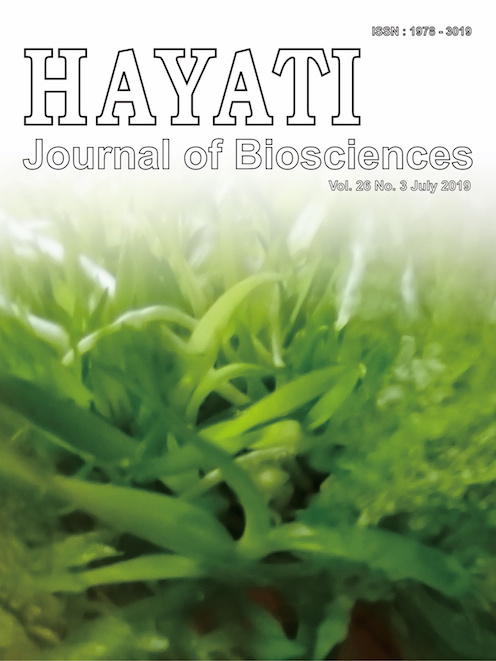Androgynomonoecious Jatropha curcas: Chromosomes, Isozymes, and Flowers Gender
Abstract
Jatropha curcas (J. curcas) is usually monoecious plants, which have male and female flowers on the same inflorescence. However, J. curcas can be found as an androgynomonoecious plant (have male, female, and hermaphrodite flowers), even though very rare. Androgynomonoecious J. curcas can be identified after six months of planting when it had started flowering. Therefore, it is important to identify the characteristics of androgynomonoecious J. curcas that can differentiate between androgynomonoecious and monoecious plants in earlier stages of growth. The objectives of the research were to observe isozymes, chromosome and flowers gender of androgynomonoecious and monoecious J. curcas Banten and Lampung accessions. Seeds from five genotypes of J. curcas were used in the research. The observation was carried out on the chromosome and isozymes (Peroxidase and Esterase isozymes) could be used as markers to differentiate androgynomonoecious and monoecious plants. Observations about the flower gender from offsprings derived from different seeds were important to know the inheritance of flower gender. The androgynomonoecious and monoecious J. curcas were diploid with number of chromosomes 2n=2x=22. The chromosomes of androgynomonoecious have longer than that of monoecious J. curcas. The isozymes of androgynomonoecious J. curcas had four alleles and monoecious J. curcas (Banten female monoecious) had three alleles. The flower inflorescence and gender derived from androgynomonoecious plants were unstable, due to androgynomonoecious is intermediate state.Downloads
HAYATI J Biosci is an open access journal and the article's license is CC-BY-NC. This license lets others distribute, remix, tweak, and build upon author's work, as long as they credit the original creation. Authors retain copyright and grant the journal/publisher non exclusive publishing rights with the work simultaneously licensed under a https://creativecommons.org/

























.png) IPB University
IPB University Department of Biology
Department of Biology The Indonesian Biological Society
The Indonesian Biological Society 

